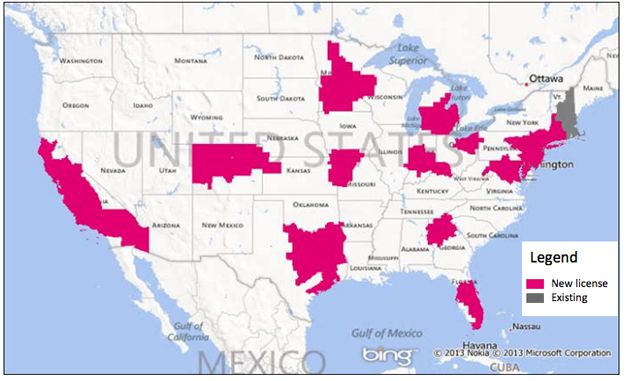What’s next for T-Mobile? VoLTE and low frequency
T-Mobile may not be well-known for having the best coverage in the States, but thankfully it knows it and its focus is clearly on making sure that changes. The most immediate-term plans are about getting the right foundation laid. That means rolling out LTE to as many markets as possible, as quickly as possible. In the long term, things look even better for the magenta carrier. It’s much more about making the coverage better, and not just faster or wider.
In an exclusive interview with Sascha Segan of PCMag, earlier in the week, T-Mobile’s CTO Neville Ray spoke on a variety of topics, but most predominant was the focus on network. My attention was grabbed by the second page of the interview in which he spoke on future network updates. One of those mentioned was VoLTE.
For those unsure what that means, it’s Voice Over LTE. In even more basic terms, it’s the ability to make calls over an LTE connection. Currently, that’s not possible. When you have LTE signal now, when you make a call, your phone connects to the old 2G/EDGE network to make that call. So, you’re still able to make the call, so what, right? Well, actually, it is a big deal when considering the big picture. It’s important because it allows carriers like T-Mobile to shut down their old 2G networks and take back that spectrum, re-using it to make a more efficient 4G network. Simply put, they need that spectrum currently in use by the older network technology to make future networks stronger and faster.
Thankfully, T-Mobile has it in its sights.
“I think for sure we will be one of the early players in the VoLTE space,” Ray said. “And it’ll work seamlessly across LTE and HSPA.”
There were no promises on time scale, and no official announcement (as such) has been made, but with the speedy rollout of LTE so far, I can’t imagine it’ll take too long for the carrier to start experimenting and testing.
At some point later this year, T-Mobile’s also going to start rolling out its 700Mhz A-block spectrum. Why that’s important is only really understood when you see Tmo’s current networks and issues. At the moment, Tmo uses predominantly mid-high frequency bandwidth airwaves. This is great for speed, but it’s not great when it comes to penetrating buildings’ walls. But that’s not its only issue. Higher frequencies require more towers/masts than the longer wave spectrum to cover an area.
Anyone who’s done any basic physics will know the reasons why. Higher frequency radio waves just don’t travel as far as long waves. They run out of energy after a shorter distance, because they spend all their energy creating faster waves. Imagine – if you will – a piece of string. Rest that piece of string on a surface and try to create as many waves as you can in the string. Measure the distance (in a straight line) between the ends of string. Then use a piece exactly the same piece but create about half the number of waves, keeping the waves at the same height, you’ll noticed the string covers a larger distance. Length of string represents the power used to push out the waves. To push higher frequency waves the same distance as lower frequency waves would require a lot more power behind it. The analogy isn’t perfect, but, it captures the essence of why T-Mobile needs these lower frequencies.
Lower frequency travels further, requiring fewer towers, reaching more people with less cost, and gets in to buildings better. It’s one of the key things T-Mobile’s missing. And it’s going to be rolling out later this year.
As for the deal with Verizon to get the lower frequency spectrum, T-Mobile simply handed over $2.4 billion in cash and spectrum. Verizon has lots of lower frequency airwaves, but needs higher frequency. While – as I’ve already explained – that’s good for signal strength and quality, it’s bad, because Verizon has so many more customers and they’re trying to connect to fewer towers, causing the network to jam up at times and get slow.
Verizon got some of T-Mobile’s 1700MHz and 1900MHz spectrum. But, before any of you panic over the fact that T-Mobile still needs it, they only exchanged it in markets where it won’t have any detrimental affect on Tmo’s plans.
“We only traded our spectrum in markets where it does not impact our 20+20 MHz LTE capability. And coverage benefits of low band are massive for T-Mobile customers, allowing us to extend the reach and performance of our high performing 4G LTE network,” Ray said.
So, in-short: For the year ahead, T-Mobile’s going to be making its coverage better, wider and faster. We’ve already heard plenty on its plans to launch Wideband LTE (its much faster 4G network capable of speeds up to 147Mbps).
I highly recommend reading the full interview on PCMag. Once you’ve read that, and watched the interview with John Legere on Yahoo! Tech, you’ll have a great picture on where T-Mobile is headed this year.

